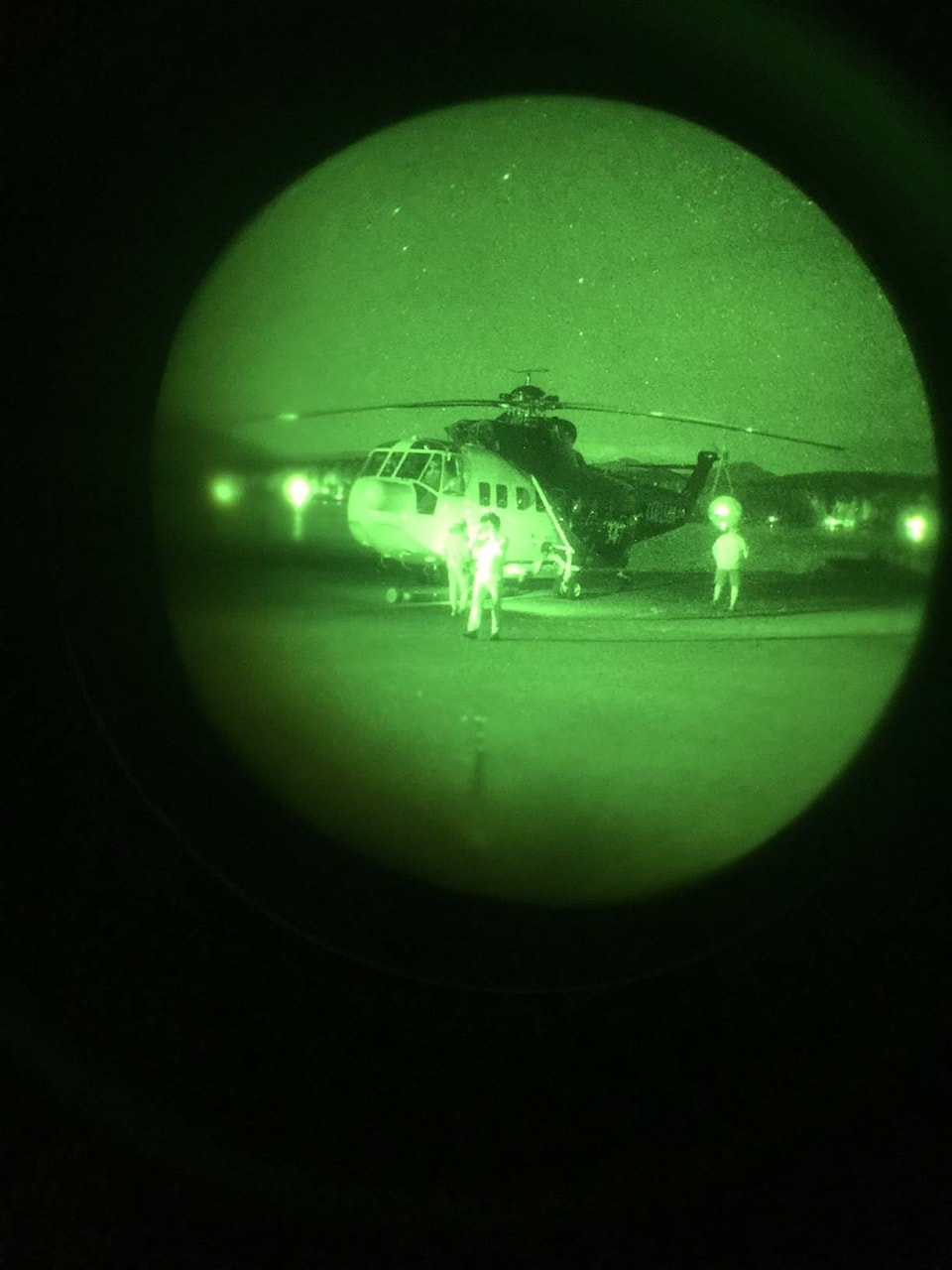Coulson Aviation were testing night vision goggles (NVG) and thermal technology on their firefighting helicopters this week in preparation for a demonstration slated for the fire commissioner of Australia.
Coulson Aviation are the only commercial operator in Canada approved to fight fire at night, an operation they are taking to Australia in time for their fire season that begins Dec. 1. Wayne Coulson, president and CEO of Coulson Group, said he hasn’t found a province in Canada interested in utilizing night time fire fighting.
This week, two Coulson aircraft—a Sikorsky S-76 and a Sikorsky S-61—were on and around Sproat lake testing the NVGs.
“We did probably 30 loads out of Sproat Lake and a bunch of water sources around the airport,” said Wayne Coulson. “The reason we’ve been so focused on night operations is because there’s so many opinions on how to fight a fire during the day. We didn’t have the same push back on fighting fires at night.”
Advantages of fighting fires at night, Coulson said, are that the air traffic quiets significantly which results in less stress for pilots and less worry about running into another aircraft.
Coulson said they began testing thermal and NVGs in 2011, and their equipment is the same used in Afghanistan, Iraq and for military uses.
“We’ve been able to get approval through the U.S. government to utilize that type of technology in Canada,” Coulson said. “It’s restricted product that we have, so every set of goggles are registered with the U.S. government, so they know where they’re at.”
Coulson’s Sikorsky S-76, a command and control aircraft, is equip with a thermal imaging camera on the nose that relays video to a 26-inch flat screen in the back of the helicopter.
“The camera shoots in thermal so you can see all the images on the screen,” he said. “We have a laser in the camera so whatever we’re looking at we can point the laser and identify targets.”
Coulson’s Sikorsky S-61 fire bombing helicopter, that flies at 300 feet above ground, communicates to the S-76, that flies at about 2,000 feet above ground, where they want the water loads to go, via laser.
“Basically, we fire this laser beam the size of a car onto the hot spot where we want to bomb. You can see that through the goggle” Coulson said.
Coulson explained that they have two digital video recorders in the S-76 helicopter recording all the time, which he said is able to “measure the reward for the additional risk.”
“I probably have about 50 flight hours of filming fire. Using the thermal camera we’ll be more precise on knocking the fire out then we will by daytime operations,” he said. “This is probably our 15th trial at night that we feel is just as safe (as daytime firefighting).”
The videos will be used for after-mission debriefs that Coulson said they can provide to their customers who will be able to see the performance.
“Having the thermal imaging camera is going to be a significant advantage to the firefighting business.”



